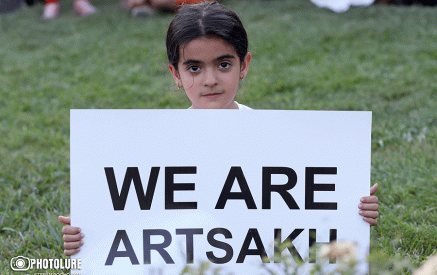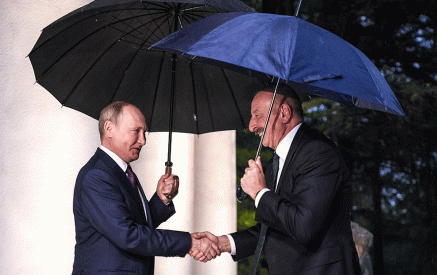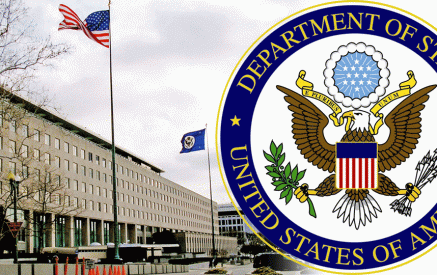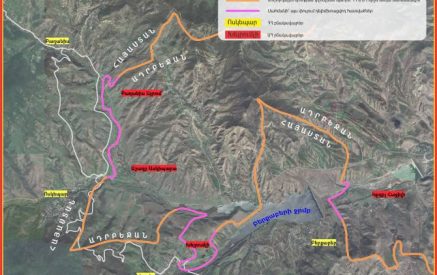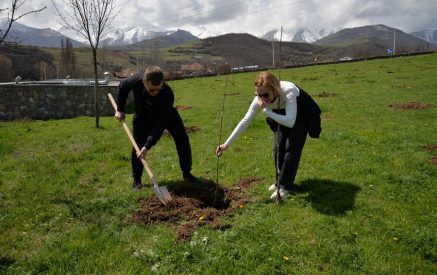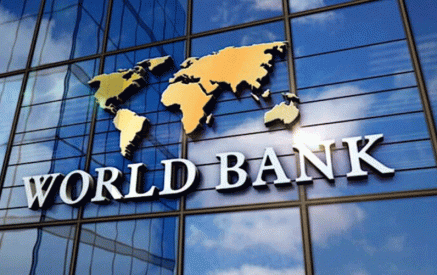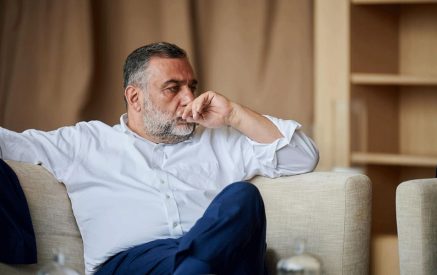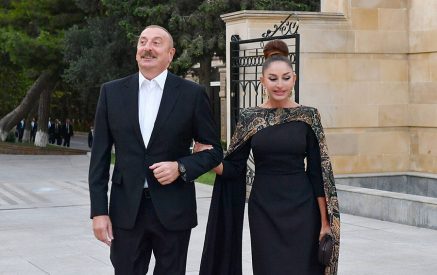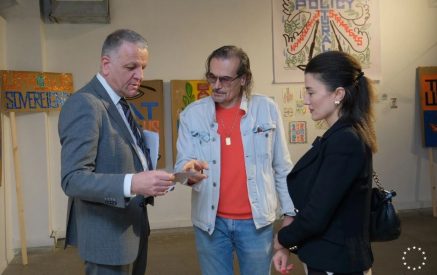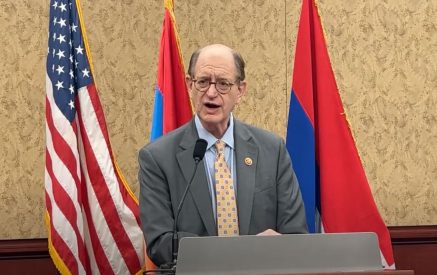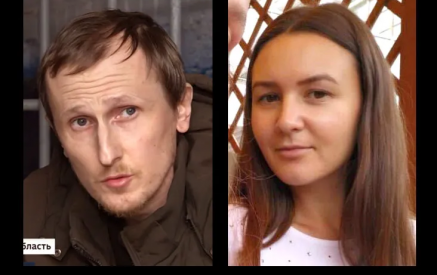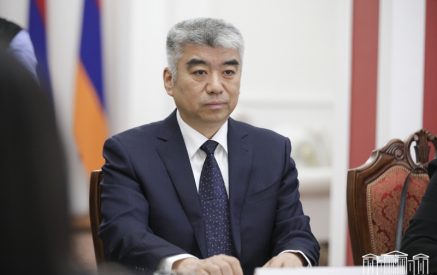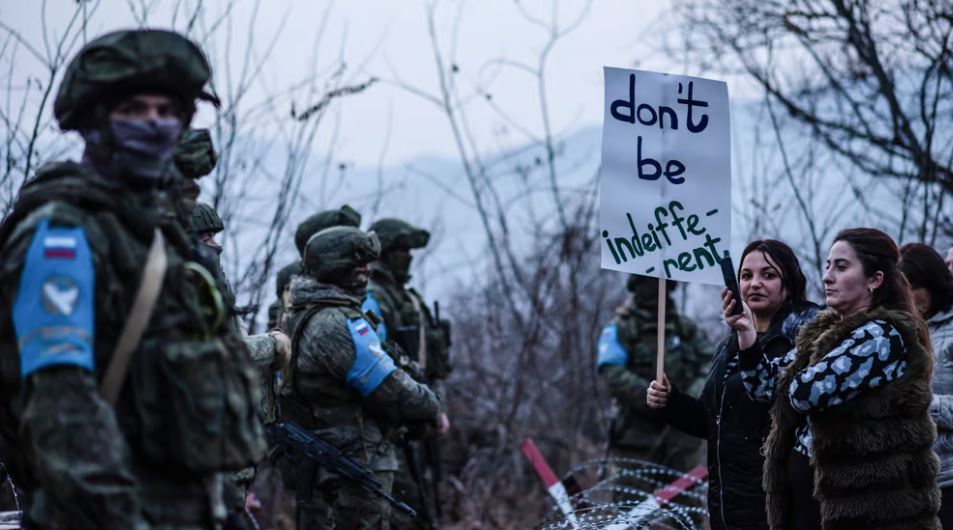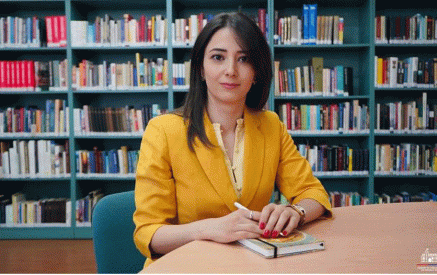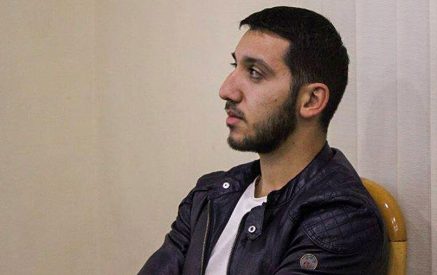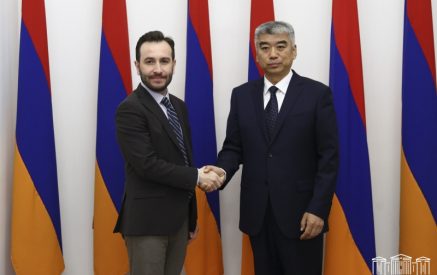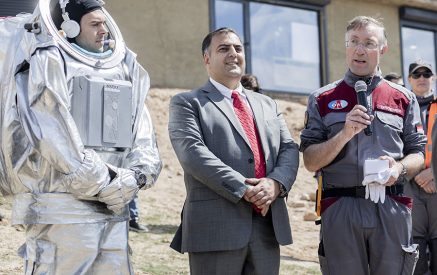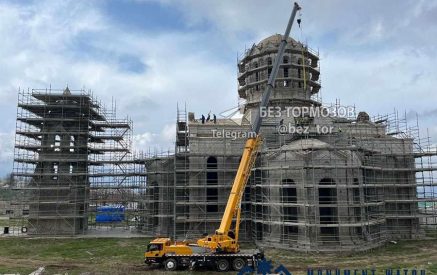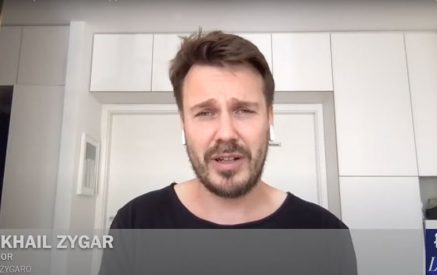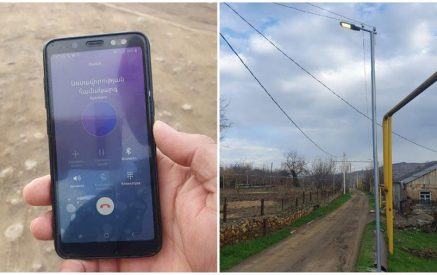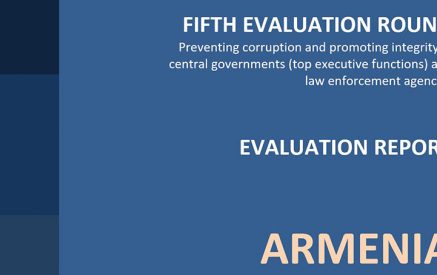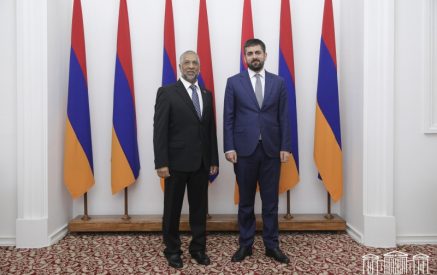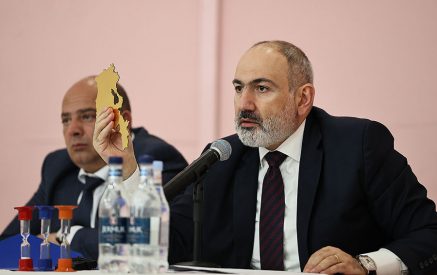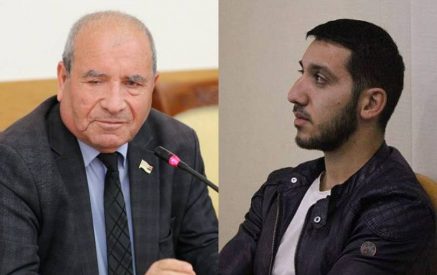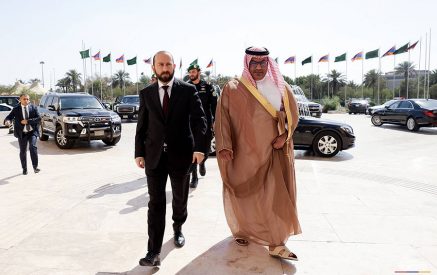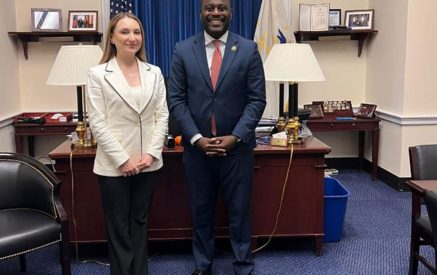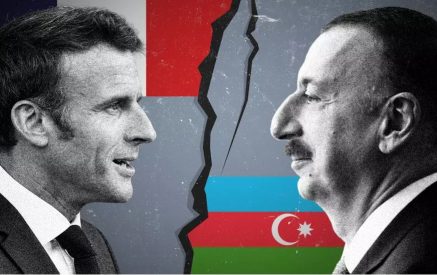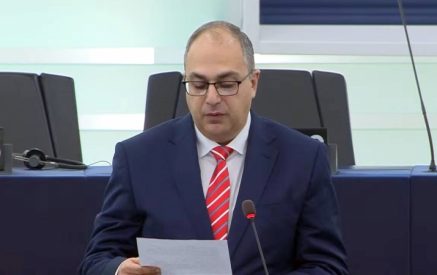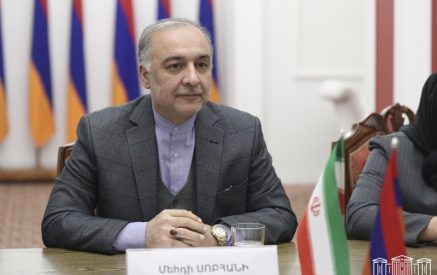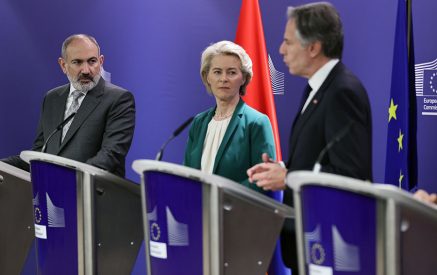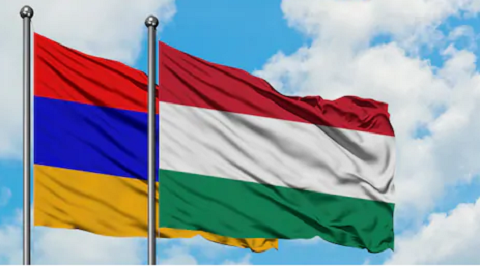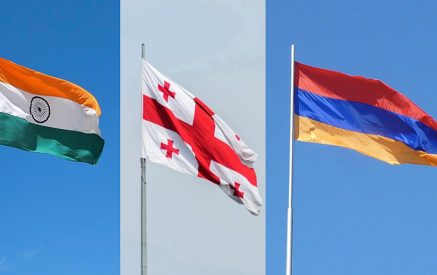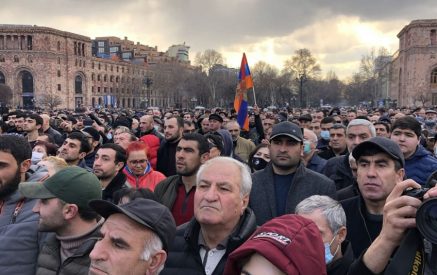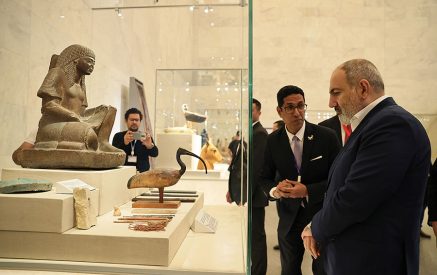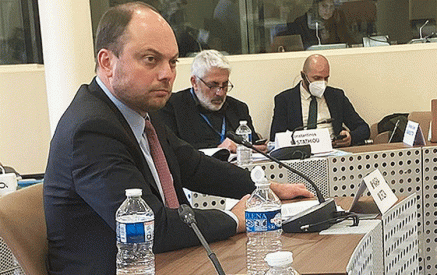Armen Grigoryan
AIISA partner expert
Eurasia Democratic Security Network fellow
Read also
State Capture by Means of Constitution: Armenian and Hungarian Cases
Introduction
In 2012, when President Serzh Sargsyan suspended diplomatic relations with Hungary after the extradition of Ramil Safarov to Azerbaijan, most Armenians’ perception that Hungary’s Prime Minister Viktor Orbán himself played an important, if not decisive role in the unfortunate decision to extradite the notorious axe-murderer, was quite accurate. It is a bit ironic that Orbán’s certain actions have become a reference point for some Armenian political actors connected to the former ruling Republican Party of Armenia (RPA).
Back in 2012, RPA-linked nationalist activists threw eggs and tomatoes at the Honorary Consulate of Hungary in Yerevan and burned a Hungarian flag. Yet, RPA deputy chair Armen Ashotyan recently indicated that the party has been maintaining ties with a Hungarian party[i] – presumably with Orbán’s Fidesz, as both are members of the European People’s Party. On the other side, there is essentially no doubt that if Nikol Pashinyan’s cabinet had restored full-fledged relations with Hungary, its opponents, including the RPA, would cry betrayal of national interests.
At the same time, as the RPA is in opposition, trying to stage a comeback, some groups close to it have been supplementing their nationalist-conservative agenda – loaded with conspiracy theories and other features resembling “alt-right” – with suggestions that Armenia should follow Hungary’s example in a certain aspect of policy, namely banishing the Open Society Foundation.[ii] It is not yet fully clear whether the approval of Orbán’s policies follows suggestions of foreign consultants not concerned about certain Armenian sensitivities, or rather indicates right-wing populists’ wish to develop ties with like-minded foreign partners. Evidence of attempts to build such ties, particularly with the German AfD, has already appeared.[iii]
The not-so-unintended outcome of the constitutional amendments in Armenia
Constitutional amendments adopted in Armenia in 2015 seemed the safest way for then-president Serzh Sargsyan who had to solve the problem of retaining power after his second presidential term. Sargsyan and his entourage probably considered the transition to a parliamentary system the safest option, preferable to either the Russian model, i.e. appointing a “placeholder” and standing for election again in five years, or the Azerbaijani model, i.e. removing the constitutional ban on a third presidential term. Either of those models could be expected to make power succession problematic as presidential elections had traditionally been accompanied by opposition mobilization and mass protests threatening regime stability.[iv] The actual outcome of the transition, resulting in the Velvet Revolution, was unexpected.
However, as the current political crisis involving the Constitutional Court shows, the constitutional amendments, in addition to the attempt to secure a de facto third term and a further hold on power for Sargsyan, were arranged in a fashion allowing the RPA to retain control over the judiciary and several other institutions. As a result, a number of RPA appointees and cronies cannot be removed from office unless they resign. The situation essentially amounts to a state capture embedded in the constitution. Though enjoying a two-thirds parliamentary majority, Pashinyan’s cabinet most likely may not avoid a protracted political crisis without adopting a declaration condemning the state capture and initiating adoption of a new constitution.
From an Armenian perspective, it is worth having a closer look at the processes that have taken place in Hungary during the last few years. Furthermore, it is possible to draw a parallel between certain processes in the two countries. Such a comparison might help to understand some common trends better.
Hungarian parallels
After winning a parliamentary supermajority in 2010, Prime Minister Orbán used it for rewriting Hungary’s constitution. As a result, the Constitutional Court, the judiciary, the Central Bank, the State Audit Office, the National Fiscal Council, the State Prosecution Service, media regulators, and other state institutions could be controlled by Orbán’s appointees firmly, and, therefore, the system of checks and balances virtually disappeared.[v] Visiting lecturer at the Humboldt University Berlin Dániel Hegedűs called the current state of affairs “state capture embedded in Hungary’s current Fundamental Law.”[vi]
The election system was restructured in Fidesz’s favor, allowing it to win even if it gets fewer votes: In 2018, Fidesz won a two-thirds majority for the third consecutive time even though opposition parties combined received one hundred thousand more votes.[vii] In addition to redrawing the boundaries of electoral districts, Fidesz has greatly benefited from votes of ethnic Hungarians in neighboring Slovakia, Serbia, Romania and Ukraine who had been granted citizenship and voting rights with a possibility to vote for national party lists by mail. In 2014 elections, over 95 percent of votes cast by non-domestic citizens went to Fidesz.[viii] A similar voting pattern could be observed in 2018 as well. Additionally, in 2018 a number of voters from Ukraine’s Transcarpathian region were registered in some villages in Eastern Hungary, thereby getting an opportunity to vote in individual constituencies too, and were transported to their new constituencies – where some single-story houses provided registered address for up to 200 people – on the election day. Furthermore, fraud including vote buying, voter intimidation, tampering with votes sent by mail, missing ballots, and election software malfunctions also seems to have contributed to Fidesz’s supermajority.[ix]
Orbán’s critics mostly considered his third consecutive victory a sign of emerging autocracy. Before the 2018 elections, it was noted that Orbán managed “to build a self-styled illiberal state, with few effective checks on his power, a public media the government uses to propagate its views and attack its opponents, as well as a new class of politically-connected oligarchs holding increasing sway over the economy.”[x] There were also warnings that the situation could even get worse: “In Hungary, it is not just the rule of law that has been under threat. … Unless one wants to say that a democracy remains a democracy as long as the government does not stuff the ballot boxes on Election Day, it is crucial to insist that democracy itself is being damaged. … This election is probably the last before Hungary shifts from what is already a deeply damaged democracy to what political scientists would call a full-blown electoral autocracy. Elections would still be held in the future, but a real turnover of power would be impossible.”[xi] Hegedűs also argued: “Given the uninterrupted authoritarianization process as well as Orbán’s outspoken threat toward his adversaries … elections will be the last somehow free ones in Hungary if he can keep power in his grip. … If Orbán wins again, the illiberal state of Hungary will soon turn out to be authoritarian.”[xii]
The media, pundits, and policymakers in Europe and beyond have also paid tremendous attention to methods used to make Orbán’s family and close friends rich. Indeed, it took only nine years since Orbán’s becoming prime minister in 2010 for his childhood friend, former gas fitter Lőrinc Mészáros, who boasts he is “smarter than Mark Zuckerberg” and says he owes his fortune to “God, luck, and Viktor Orbán,” to become the richest Hungarian with a handsome fortune of over a billion Euros.[xiii] A large part of that wealth has been accumulated from state procurements for water supply systems, roads, and monopolized tobacco shop concessions.[xiv] Orbán’s father and two brothers grew rich thanks to a dubious privatization deal and state construction projects, and Orbán’s son-in-law István Tiborcz has also largely benefited from dubious procurement of state and EU-funded projects often distributed by tenders without competitors.[xv] The level of absurdity of Orbán’s cronyism may be further underlined by the fate of the law on public procurement adopted in 2015. It initially included a passage forbidding the highest state officials and their family members from making public procurements bids, and a month later the parliament amended the law, making it possible for family members to take part in bids unless they live in the same household.[xvi]
Similarities and possible solutions
Let us again summarize what has happened in Hungary since 2010, causing the fears of autocracy. The constitution was amended to provide an advantage for the ruling party. Particularly, the system of checks and balances was removed, so the executive may effectively control all state institutions and public media. The election system has been tampered with continuously so it would disproportionately favor the ruling party. Besides, ethnic kin in neighboring states was granted citizenship and voting rights, giving an additional advantage to Fidesz. Prime minister’s relatives and friends have become rich.
There are, of course, some additional features of Orbán’s illiberal regime. Bálint Magyar notes that as all the political power has been monopolized, large businesses not committing themselves to the ruling party are either forced to surrender, or become the targets of efforts at economic annihilation. Rival oligarchs having their own political ambitions face direct state coercion, but those who just try to avoid full loyalty to the “political mafia family” get a similar treatment.[xvii] Concerning educational and cultural policies, there are plans to expand a “patriotic education” program including compulsory military training for secondary schools, which may ultimately turn the education system into a place for ideological indoctrination.[xviii] The list of characteristic features of Orbán’s “illiberal” state may be continued.
It is obvious that for about two decades before the Velvet Revolution Armenia shared a number of features with the current Hungarian system. The judiciary, the Central Bank, media regulator and other state institutions were subjugated to the executive branch. The electoral system was manipulated continuously to give an advantage to the RPA and its allies. Constitutional amendments adopted in 2005 granted citizenship to ethnic kin abroad, so ethnic Armenians in Georgia’s Javakheti region became voters registered in large numbers at some addresses in Armenia and were transported to voting stations on election days (meanwhile, Armenians having no dual citizenship and living abroad, many of whom were critical of the government, were not allowed to vote). State officials, their relatives and friends became rich. The police and tax authorities harassed oligarchs who dared to support the opposition or show political ambitions of their own; the best-known case was President Sargsyan’s ad hominem attack on the Prosperous Armenia Party’s leader Gagik Tsarukyan, followed by coercive actions, in 2015. As regards “patriotic education,” Armenia effectively got it under the Kocharyan and Sargsyan presidencies, as ministers of education – Levon Mkrtchyan, who used to advance Armenian Revolutionary Federation Dashnaktsutyun’s ideology, and then RPA’s Armen Ashotyan – introduced military-patriotic propaganda and religious indoctrination disguised as history of the Armenian Church at high schools. Most importantly, in addition to circumventing the ban on occupying the president’s office for more than two consecutive terms, constitutional amendments adopted in 2015 institutionalized RPA’s privileged position: a mechanism securing control over some institutions – most importantly the Constitutional Court and the judiciary – was introduced, allowing the former regime to retain control even without parliamentary representation. Drawing further parallels is also possible.
Hungary has neither experienced the same level of voting fraud as Armenia, nor has seen massive violence against opposition candidates and activists, including beatings, kidnapping, or use of deadly force, like on March 1, 2008. Yet, as mentioned above, some analysts argue that it has reached a situation when perhaps “elections would still be held in the future, but a real turnover of power will be impossible.” Similarly, under the previous Armenian regime a turnover of power by means of elections was essentially impossible. As argued before, already after the March 1, 2008 events, a negotiated transition requiring free elections organized by the incumbent authorities had become an unrealistic scenario, so civil disobedience aiming at regime collapse remained the only possibility for a non-violent regime change.[xix] The constitutional amendments adopted in 2015, aiming at regime preservation, reconfirmed the impossibility of regime change by means of elections, so the situation climaxed with the Velvet Revolution.
As Hegedűs noted, even if in 2018 there was a little chance that the Hungarian opposition could unite and jointly get a majority of votes, it certainly would not get a two-thirds majority required to amend the constitution. Therefore, a new government would not be able to change the institutional setting created by Fidesz and dismantle the state capture embedded in the current Fundamental Law without violating the constitutional order and the rule of law. However, otherwise Fidesz would be able to return to power within a short time. Therefore, if the opposition had managed to win, it would have needed exceptional measures, and the EU would also need to decide upon its position concerning a new government’s possible attempt to dismantle Orbán’s illiberal state by circumventing the constitution adjusted by Fidesz to keep its hold on power.[xx]
In Armenia’s case, there is a possibility to adopt a new constitution by a referendum, and in addition to that, Pashinyan’s My Step bloc won a two-third parliamentary majority, therefore the government does not face the dilemma noted by Hegedűs. Condemning the state capture by the National Assembly, implementation of transitional justice, constitutional and judiciary reforms, a reform of the election system, adoption of some laws (most essentially, a law against illegal enrichment and a law stipulating transparency of media ownership) and some other measures are crucial for securing the Velvet Revolution’s democratic achievements. The government’s reluctance to implement such measures quickly, repeated statements about having a preference for slow reforms, as well as focusing on a number of trivial issues in the first months after the snap elections in December 2018, are quite upsetting.
The international context: Are double standards justifiable?
Considering the numerous similarities between the situation in Armenia before the Velvet Revolution and in Hungary, it may be worth to conclude by comparing the international attitudes towards the two cases. As a number of publications show, there has been strong disappointment among western policymakers and media, and their frustration is understandable as a NATO and European Union member country may be turning into an autocracy. However, similar – or even worse – tendencies in other countries sometimes have often been neglected.
Certainly, Armenia’s former leaders did not have access to European funds in the same way Orbán’s entourage does. Yet, that obviously does not mean that wide-scale voting fraud, corruption, and ultimately state capture embedded in the constitution did not matter in the Armenian case. Yet, Western policymakers and pundits hardly criticized the constitutional reform of 2015 similarly to the way they have been criticizing Orbán’s manipulation of the Hungarian constitution. In fact, rather sympathetic accounts were easier to find. For example, Carnegie Europe senior fellow Thomas de Waal admitted: “Nothing will change. Indeed, the presidential administration building where Sargsyan works will become the prime minister’s office, with merely a different nameplate on the door. … Obviously, this is a mechanism that allows Armenia’s current ruling elite to stay in charge. It’s a familiar tactic in the post-Soviet space, where leaders endlessly tinker with their constitutions to perpetuate their power,” yet also argued that “the new configuration and its division of powers could work better for Armenia than the old one”[xxi] (i.e. the parliamentary system versus the presidential one), and even praised some of Sargsyan’s policies. In turn, policymakers’ approach might be summarized by a remark made by the High Representative of the European Union for Foreign Affairs and Security Policy Federica Mogherini, soon after the adoption of the constitutional amendments: Armenia, she argued, was “consolidating fragile democracy.”[xxii]
The long-term devotion to the notion of positive reinforcement, with preference given to praising small improvements instead of criticizing major flaws, did not help to advance democracy and good governance in Armenia. Particularly, double standards involving generous indulgence towards the former Armenian leadership corrupted the image of the West and of its normative values among a large segment of Armenia’s population. On the other side, while the West is, quite understandably, mostly preoccupied with the deterioration of democratic standards and corruption within, endorsing corrupt politicians outside is hardly a feasible policy. It seems possible to afford neglecting the processes going on in a small country lost somewhere between Russia and the Middle East. Yet, the earlier neglect of some processes in a small peripheral country heavily influenced by Russia – the principal exporter of “illiberalism” – might have allowed fine-tuning of dubious methods which could later be used by other autocrats to corrupt even once exemplary transitional countries.
In this context, it is also remarkable that then-president Sargsyan’s overnight decision not to sign the EU-Armenia Association Agreement in 2013 and to join the Russia-centered Customs Union instead was considered by the majority of European, American, and other experts as a rather natural extension of traditional pro-Russian policy; there were shortsighted suggestions that after receiving Armenia as a little prize Vladimir Putin would not create further obstacles for other countries’ association with the EU. Rare warnings that serious troubles in the EU’s Eastern Neighborhood would follow soon were not paid enough attention.
It may be worth writing a book resembling Bálint Magyar’s remarkable piece on Hungary sometimes, covering the Armenian case of post-communist mafia state created in the two decades before the Velvet Revolution. More parallels could be drawn with the Hungarian and some other cases. However, that kind of academic publication would better be postponed: focusing on current policy analysis seems more necessary at the moment, as on the one side Armenia has a unique chance to democratize, but on the other side, the former regime’s remaining control of the judiciary and other institutions, supplemented by propaganda and other “hybrid war” instruments and driven by huge financial and media resources, is being used for making a restoration of the mafia state possible.
The transition period ahead is not going to be an easy one, and it requires determined and precise actions by the government and civil society. And while the principal job has to be done by the Armenians, other actors interested in Armenia’s successful democratic transition may also decide upon the amount of attention worth paying to the ongoing processes.
“Democracy, Security and Foreign Policy” programme (NED)
The Armenian Institute of International and Security Affairs (AIISA)
[i] Armen Ashotyan’s Facebook post, May 30, 2019.
[ii] Armen Grigoryan, “Armenia first”: Analysing Armenia’s growing alt-right scene.” Open Democracy, 2019.
[iii] Ibid.
[iv] Armen Grigoryan, “Protesters in Armenia demand snap parliamentary elections and Prime Minister Sargsyan resigns.” Eurasia Daily Monitor, April 23, 2018.
[v] Patrick Kingsley, “As West fears the rise of autocrats, Hungary shows what’s possible.” New York Times, February 10, 2018.
[vi] Dániel Hegedűs, “Hungarian politics is about to enter a new period — no matter who wins the elections.” GMFUS, April 5, 2018.
[vii] Balázs Jarábik, “Viktor Orbán’s survival games.” Carnegie Europe, April 10, 2018.
[viii] Lili Bayer, “Viktor Orbán courts voters beyond ‘fortress Hungary’.” Politico.eu, August 22, 2017.
[ix] Rozi Bazsofy and Elliott Goat, “Fresh evidence of Hungary vote-rigging raises concerns of fraud in European elections.” Open Democracy, May 17, 2019.
[x] Zoltan Simon, “Orban’s ominous threat pushes Hungary opposition to start talks.” Bloomberg, March 19, 2018.
[xi] Jan-Werner Müller, “‘Democracy’ still matters.” New York Times, April 5, 2018.
[xii] Dániel Hegedűs, op. cit.
[xiii] Budapest Business Journal, January 2, 2019.
[xiv] Bálint Magyar, Post-communist mafia state: The case of Hungary. Budapest: CEU Press, 2016, p. 90.
[xv] Neil Buckley and Andrew Byrne, “Viktor Orban’s oligarchs: a new elite emerges in Hungary.” Financial Times, December 21, 2017.
[xvi] Bálint Magyar, op. cit., p. 97.
[xvii] Bálint Magyar, op. cit., p. 81.
[xviii] Deutsche Welle, “Hungary PM Viktor Orban aims to militarize the school system.” August 14, 2017.
[xix] Armen Grigoryan, “Regime change is on the agenda” (in Armenian). Zhamanak, June 13, 2008.
[xx] Dániel Hegedűs, op. cit.
[xxi] Thomas de Waal, “Will Armenia’s transition bring change?” Carnegie Europe, April 5, 2018.
[xxii] Federica Mogherini, “Returning from Azerbaijan and Armenia.” March 2, 2016.

